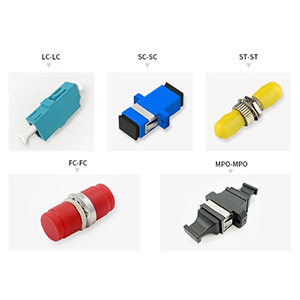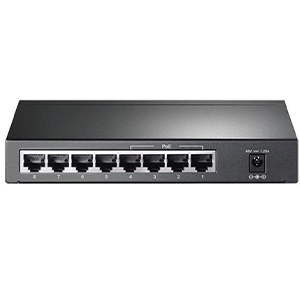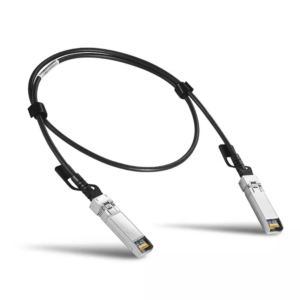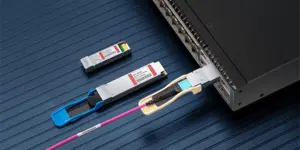Splitters play an important role in signal transmission. This article will compare two key technologies: active splitters and passive splitters. We will first explain the role of splitters and describe their two main types. Next, we will introduce the working principle and main advantages of passive splitters, such as simple structure, low cost, and high reliability.
Then, we will describe the working mechanism and main advantages of active splitters, such as signal amplification and regulation capabilities, which can improve the quality of split signals. Finally, we will compare the performance indicators of the two splitters in terms of output power, bandwidth, isolation, and differences in different application scenarios.
Basic concepts of splitters
A splitter is a device used to distribute a signal source to multiple output terminals, commonly used in communication and broadcasting systems. It can effectively allocate signal resources, ensure that multiple devices or channels receive signals at the same time, and improve system efficiency.
The role of the splitter:
A splitter is a network device whose main functions include:
(1) Distribute signals to multiple output ports:
- A splitter can distribute a single signal or power signal to multiple different output ports.
(2) Effectively transmit and process signals:
- A splitter ensures that each output port can obtain sufficient signal strength and quality.
- This ensures effective transmission and processing of signals on different output lines.
Two major types of splitters:
Depending on the working principle, splitters can be divided into the following two major types:
(1) Active splitters:
- Active splitters require external power supply to work.
- They usually use active electronic devices (such as amplifiers, switches, etc.) to achieve signal distribution.
(2) Passive splitters:
- Passive splitters do not require external power supply to work.
- They usually use passive devices (such as couplers, switches, etc.) to achieve the splitting function.
Active splitters can provide better signal isolation and gain, but require external power support; while passive splitters have simple structure and low cost, but the signal isolation performance is relatively poor. In short, a splitter is a network device used to distribute a single signal to multiple outputs, achieving effective signal distribution and transmission while ensuring signal quality. It is divided into two types: active and passive, each with its own characteristics.
Characteristics of Passive Splitter
Passive splitters do not require external power and rely on the energy of the signal itself for distribution. They have the characteristics of simple structure, high reliability and low cost. They are suitable for signal distribution scenarios that do not require amplification or control.
Working principle of passive splitter:
Passive splitter (Passive Splitter) is a device that uses passive electronic components to achieve signal distribution. Its working principle is as follows:
(1) Using passive electronic components to achieve branching:
- Passive splitters use passive devices (such as resistors, capacitors, couplers, etc.) to achieve signal distribution.
- These passive components do not require external power to work.
(2) No external power supply required:
- Passive splitters do not require external power supply.
- They can directly use the power of the input signal itself for splitting and transmission.
Main advantages of passive splitters:
Compared with active splitters, passive splitters have the following main advantages:
(1) Simple structure and low cost:
- Passive splitters are composed of passive electronic components and have a relatively simple structure.
- Therefore, the manufacturing cost is low and it is suitable for large-scale deployment applications.
(2) High reliability and low maintenance cost:
- Since no external power supply is required, the reliability of passive splitters is high.
- At the same time, there is no need for regular maintenance and replacement of consumables such as power supplies, and the maintenance cost is low.
In short, the passive splitter uses passive components to achieve splitting and does not require external power supply. It has the advantages of simple structure, low cost, high reliability, and low maintenance cost, and is widely used in various network and signal distribution scenarios.
Characteristics of active splitters
The active splitter requires an external power supply, can amplify and control the signal, and ensure that the signal quality is not lost during the distribution process. It is suitable for complex systems that require long-distance transmission or multi-channel distribution.
Working mechanism of active splitter:
Compared with passive splitter, the working mechanism of active splitter has the following characteristics:
(1) Active electronic components are used to achieve splitting:
- Active splitters use active electronic devices (such as amplifiers, switches, etc.) to achieve signal distribution.
- These active components can process and adjust the signal.
(2) External power supply support is required:
- Active splitters must rely on external power supply to work properly.
- They need to obtain the required power support from the outside.
Main advantages of active splitters:
Compared to passive splitters, active splitters have the following main advantages:
(1) Signal amplification and conditioning capabilities:
- Active splitters have built-in active electronic devices that can amplify and condition the input signal.
- This ensures that each output port receives a signal of sufficient strength and quality.
(2) Can improve the quality of the split signal:
- Active splitters can provide better signal isolation and conditioning functions.
- This helps eliminate signal loss and interference and improves the overall quality of the split signal.
In short, active splitters use active electronic components to achieve splitting and require external power supply support. It has the ability to amplify and adjust signals, which can improve the quality of split signals and is suitable for application scenarios with higher requirements for signal quality.
Comparison between passive splitters and active splitters
Passive splitters do not require power, have a simple structure, and are suitable for short-distance and low-cost applications; active splitters require power, can amplify signals, and are suitable for long-distance and high-quality transmission. Both have their own advantages in complexity and applicable scenarios.
Comparison of performance indicators:
(1) Output signal power:
- Active splitters can provide higher output signal power.
- Due to the limitations of passive components, the output power of passive splitters is relatively low.
(2) Bandwidth and frequency response characteristics:
- Active splitters usually have wider bandwidth and flatter frequency response curve.
- Passive splitters have relatively limited bandwidth and frequency response characteristics.
(3) Isolation and signal-to-noise ratio:
- Active splitters can provide better port isolation and higher signal-to-noise ratio.
- Passive splitters have relatively poor isolation and signal-to-noise ratio.
Differences in application scenarios:
(1) Passive is suitable for simple and stable environments:
- Passive splitters are suitable for application scenarios with relatively simple requirements and relatively stable environments.
- Its simple structure and low cost make it more suitable for these scenarios.
(2) Active type is suitable for complex dynamic environments:
- Active splitters are suitable for application scenarios with complex requirements and large environmental changes.
- Its signal amplification, adjustment and isolation capabilities are more suitable for such complex environments.
In short, passive splitters and active splitters differ in performance indicators and applicable scenarios. Passive splitters are more suitable for simple and stable environments, while active splitters are more suitable for complex and dynamic application scenarios. It is very important to choose the right splitter type according to actual needs.
Summary
Passive splitters and active splitters each have their own applicable scenarios and play an important role in building a complete signal transmission solution. Our company has long focused on the research and development and application of splitting technology and has rich practical experience. We provide powerful splitter products, which are widely used in various network scenarios such as broadcasting, telecommunications, and military industry.
Our splitter products adopt industry-leading technical solutions and have achieved excellent levels in performance, reliability, and management convenience. At the same time, our engineering team will provide you with professional demand analysis and solution design services to ensure that the deployed splitter solution can meet your actual needs to the greatest extent. Contact us now to learn more.
Active Splitter And Passive Splitter FAQ
An active splitter is a device that uses electronic amplification to boost the signal strength as it is split. This ensures that the signal maintains quality and strength over multiple outputs.
A passive splitter is a device that divides the signal without using any amplification. It relies on the inherent properties of the signal and does not require power to operate.
An active splitter improves signal quality by amplifying the signal before or as it is split. This helps to maintain signal strength and quality across multiple outputs.
Use a passive splitter when the signal strength is already strong enough and does not require additional amplification. They are ideal for simple applications where signal degradation is minimal.
Active splitters provide signal amplification, which can help to maintain signal strength over longer distances or multiple outputs. They are beneficial in situations where signal loss or degradation is a concern.
Active splitters require a power source to operate, which can be a limitation. Additionally, they can introduce noise or interference if not properly designed.
Passive splitters can handle various types of signals, including audio, video, and data, but they are best suited for situations where signal strength is already adequate and amplification is not required.
Signal loss refers to the reduction in signal strength as it is divided between multiple outputs. In passive splitters, this loss is more pronounced, whereas active splitters can mitigate this issue through amplification.
Choose an active splitter if you need to maintain signal strength and quality across multiple outputs or over long distances. Opt for a passive splitter if the signal strength is sufficient and you do not require additional amplification.
Yes, active and passive splitters can be used together in a system. For example, an active splitter can be used to boost signal strength before distributing it through passive splitters to multiple devices.





